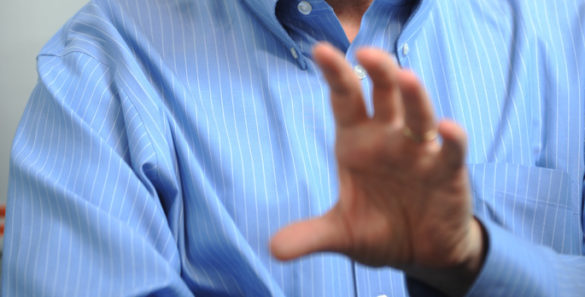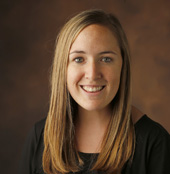
A Vanderbilt researcher has developed a new technique to measure body movement that can be employed in fields that study gestures.
In an article published in Behavior Research Methods, Caitlin Hilverman, Ph.D., demonstrates how video data and freely available computer programs can be used “to examine features of hand gestures, body movement and other motion, including size, height, curvature and speed.”

Hilverman is a postdoctoral fellow who works with Melissa Duff, Ph.D., associate professor of Hearing and Speech Sciences and director of the Communication and Memory Laboratory.
Hilverman’s body movement study was done at the University of Iowa, where she obtained her doctoral degree last year. The Psychonomic Society selected her paper as best article of the year and she will be presented with an award in Vancouver, Canada, on Nov. 11.
“This work represents a significant contribution to the field, allowing for more advanced quantification and characterization of hand gestures,” Duff said. “It is also uncommon that such a contribution would come by someone as early in their career as Dr. Hilverman is.”
Hilverman is applying the technique for capturing body movement in her current research into how gestures can facilitate learning in people with memory impairment.
“It’s a pretty rare thing in the hearing and speech world to even consider gesture, and I think what this tool will do is open up the door into answering questions about how gesture has changed in response to a variety of different conditions,” she said. “Considering gesture when we’re trying to paint a picture of how someone’s language is impaired will have great utility moving forward.”
The study is a natural outgrowth of Hilverman’s interest in gesture research, which dates to her undergraduate years at the University of Rochester, which is home to the highest per-capita deaf population in the country.
“I started taking sign language classes just so I could interact with deaf people that I came across in everyday life, but then I really liked it,” she said. “And so I ended up getting a degree in American Sign Language along with Cognitive Science. Those were my double majors.”
As she ventured further into the field of gesture research, she felt the techniques for measuring gesture and body movement left something to be desired. Such techniques focused on the gesture rate variable, the number of gestures one produces per number of words or per number of seconds. She said that is a useful measurement, but it misses the size of the gestures, their height relative to the body, and the speed of the gestures.
Her video technique captures 10 frames per second, feeding the still images to a program that assigns coordinates to body movement, measuring properties such as size, speed and curvature.
“Any time you have questions of interest about how any part of the body is moving over time, I feel like this would be a useful technique,” she said.












